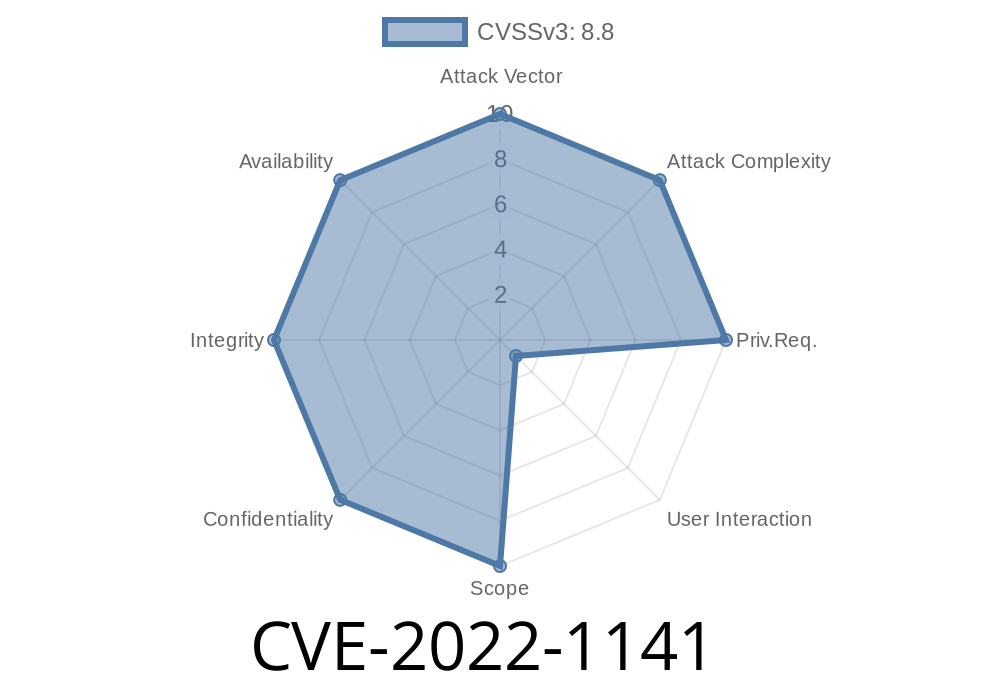CVE-2022-1141 highlights a critical vulnerability discovered in Google Chrome prior to version 100..4896.60. This post delves into the details of this use-after-free vulnerability affecting Chrome's File Manager and the exploitation process potentially leading to heap corruption. We will also present code snippets for better understanding, link to original references, and discuss the steps to mitigate this vulnerability.
Description of the Affected Component: File Manager
Google Chrome's File Manager is the component responsible for handling various file system operations within the browser. The File Manager manages routine tasks such as opening, saving, and deleting files, among other actions. The vulnerability discussed in this post is found in this crucial component.
Vulnerability Details: Use-After-Free and Heap Corruption
The vulnerability (CVE-2022-1141) is classified as a use-after-free issue, which occurs when a program continues to use a pointer after it has been freed. Consequently, this can lead to memory corruption and data leaks or, in extreme cases, enable an attacker to execute arbitrary code.
A remote attacker can exploit this vulnerability by convincing a target user to interact with a specially crafted webpage that triggers the use-after-free flaw via specific user gestures, ultimately causing heap corruption.
Here's a simplified code snippet illustrating a potential use-after-free scenario
void vulnerableFunction() {
Object* obj = new Object();
obj->performOperation();
delete obj;
// Use-after-free vulnerability:
obj->performOperation(); // Using 'obj' after it has been freed
}
This example demonstrates a case where the obj pointer is utilized even after its memory allocation has been freed. An attacker may exploit this vulnerability to manipulate the heap memory in a way that leads to arbitrary code execution or other malicious activities.
Related Source: Chromium Project Security Advisory
Exploit Details
For a successful exploitation, the attacker could craft a webpage that convinces the target user to perform a specific user gesture, which subsequently triggers the vulnerability. Below is a high-level overview of the exploit steps:
1. The attacker crafts a malicious webpage containing JavaScript code that triggers the use-after-free vulnerability in Chrome's File Manager.
2. The attacker convinces the victim to visit the malicious webpage and engage in a specific user interaction (e.g., clicking on a button or a link).
The webpage triggers the vulnerability, causing heap corruption in the Chrome process.
4. The attacker manipulates the corrupted heap to perform malicious actions, potentially resulting in arbitrary code execution or information disclosure.
Mitigation and Recommendations
The most effective way to prevent this vulnerability from being exploited is to update Google Chrome to the latest version (100..4896.60 or later). This release addresses the use-after-free issue in File Manager, effectively mitigating the risk posed by CVE-2022-1141. To update, follow the steps below:
The browser will automatically search and install the latest updates available.
In addition, users should exercise caution while browsing the web and avoid clicking on suspicious links or engaging with webpages from untrusted sources.
Conclusion
CVE-2022-1141 highlights the importance of keeping browsers and software applications up-to-date to protect against exploitation of new vulnerabilities. By understanding the underlying risks and deploying appropriate measures, users can safeguard their systems from potential security breaches.
Timeline
Published on: 07/23/2022 00:15:00 UTC
Last modified on: 08/15/2022 11:16:00 UTC
